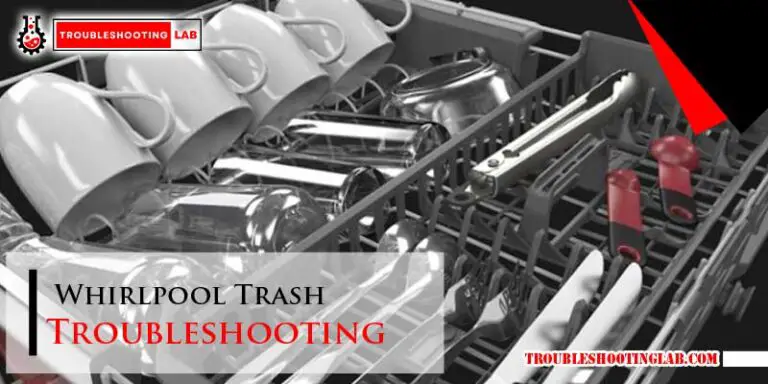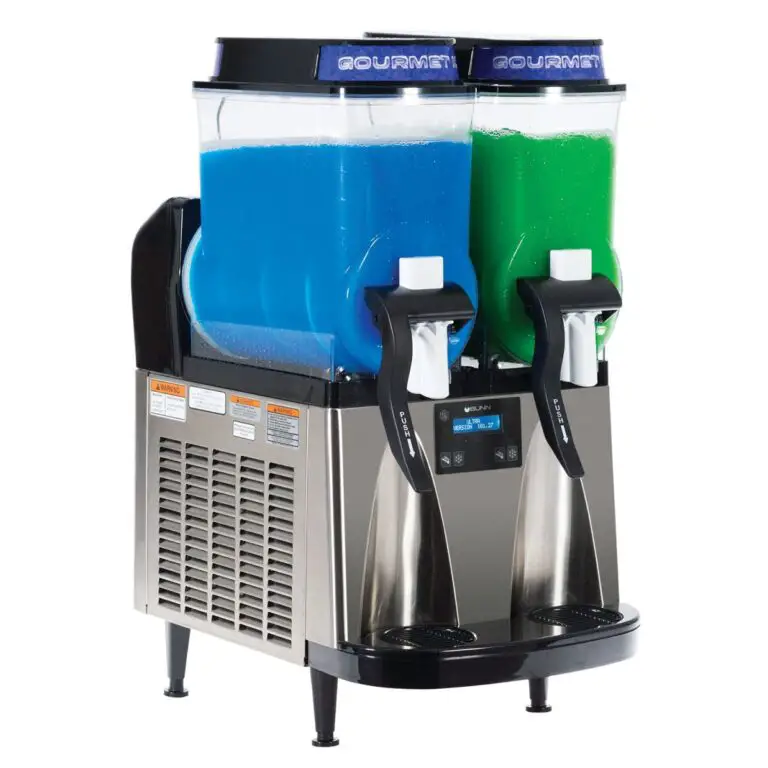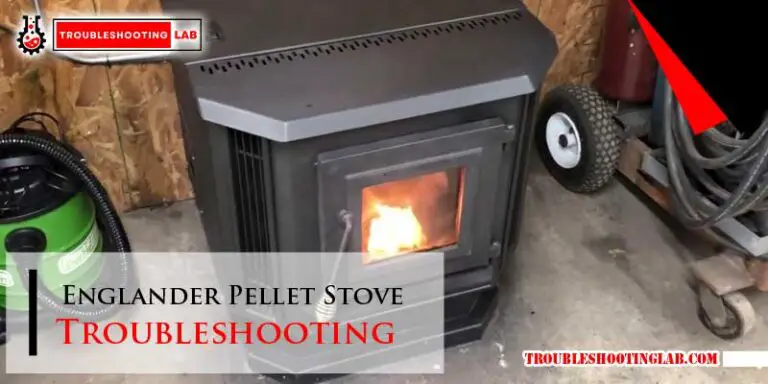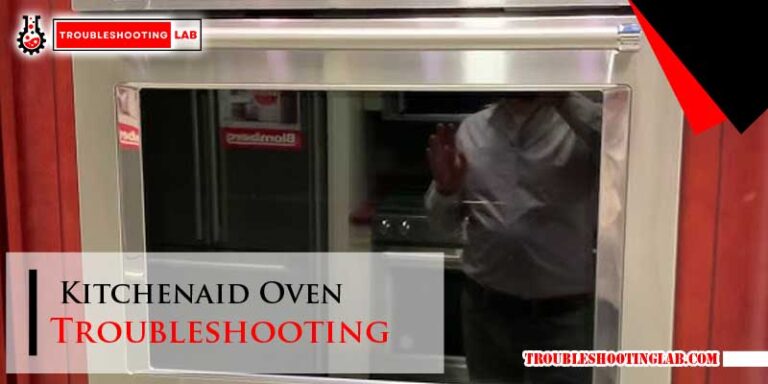Ge Gas Range Troubleshooting: Quick Fixes and Tips
Is your GE gas range giving you trouble? Don’t worry—you’re not alone.
Whether it’s burners that won’t ignite, uneven heating, or strange noises, these hiccups can disrupt your daily routine and leave you feeling frustrated. But here’s the good news: most of these problems are easier to fix than you might think.
By understanding what’s causing the issue, you can often save time, money, and the hassle of calling a repair technician. Stick with us, and we’ll guide you step by step through simple troubleshooting tips to get your GE gas range back in top shape. Let’s get started—you’ve got this!
Common Issues With Ge Gas Ranges
Owning a GE gas range can make cooking easy and enjoyable—until something goes wrong. Like any appliance, these ranges can encounter issues over time. Knowing the common problems and their solutions can save you time and frustration.
Burner Won’t Light
One of the most frequent complaints is a burner that refuses to light. This often happens when food debris clogs the burner ports. Check for any crumbs or grease blocking the gas flow and clean the area with a toothbrush and mild soap.
Another possible reason is a faulty igniter. If you don’t hear the clicking sound when turning the knob, the igniter might need replacement. Also, confirm that the gas supply is on—sometimes, it’s as simple as that.
Oven Not Heating Properly
Have you ever preheated your oven, only to find it barely warm? A broken igniter or temperature sensor might be the culprit. To test the igniter, see if it glows when the oven is on.
If it doesn’t, it’s likely worn out. For the temperature sensor, use an ohmmeter to check its resistance. A misaligned sensor can also cause uneven heating—make sure it’s positioned properly.
Strange Odors Or Smoke
Noticing a strange smell or seeing smoke during use can be alarming. Often, this happens when food spills burn on the burners or in the oven. Clean up any spills as soon as the range cools to prevent this.
If the smell is chemical-like, it could be from new parts burning off during the first use. Run the oven empty at a high temperature for 30 minutes to resolve this. However, if you suspect a gas leak, turn off the gas and contact a professional immediately.
Control Panel Malfunctions
A non-responsive control panel can bring your cooking to a halt. Sometimes, this is due to a power outage or a tripped circuit breaker. Resetting the breaker or checking the outlet could fix the issue.
If the buttons are stuck or unresponsive, dirt or grease might be the reason. Wipe the panel gently with a damp cloth and avoid using excessive water. Persistent issues may require a professional diagnosis or replacement parts.
Have you experienced any of these issues with your GE gas range? Tackling them yourself can be empowering and cost-effective. Always follow safety precautions and don’t hesitate to call a professional if needed!
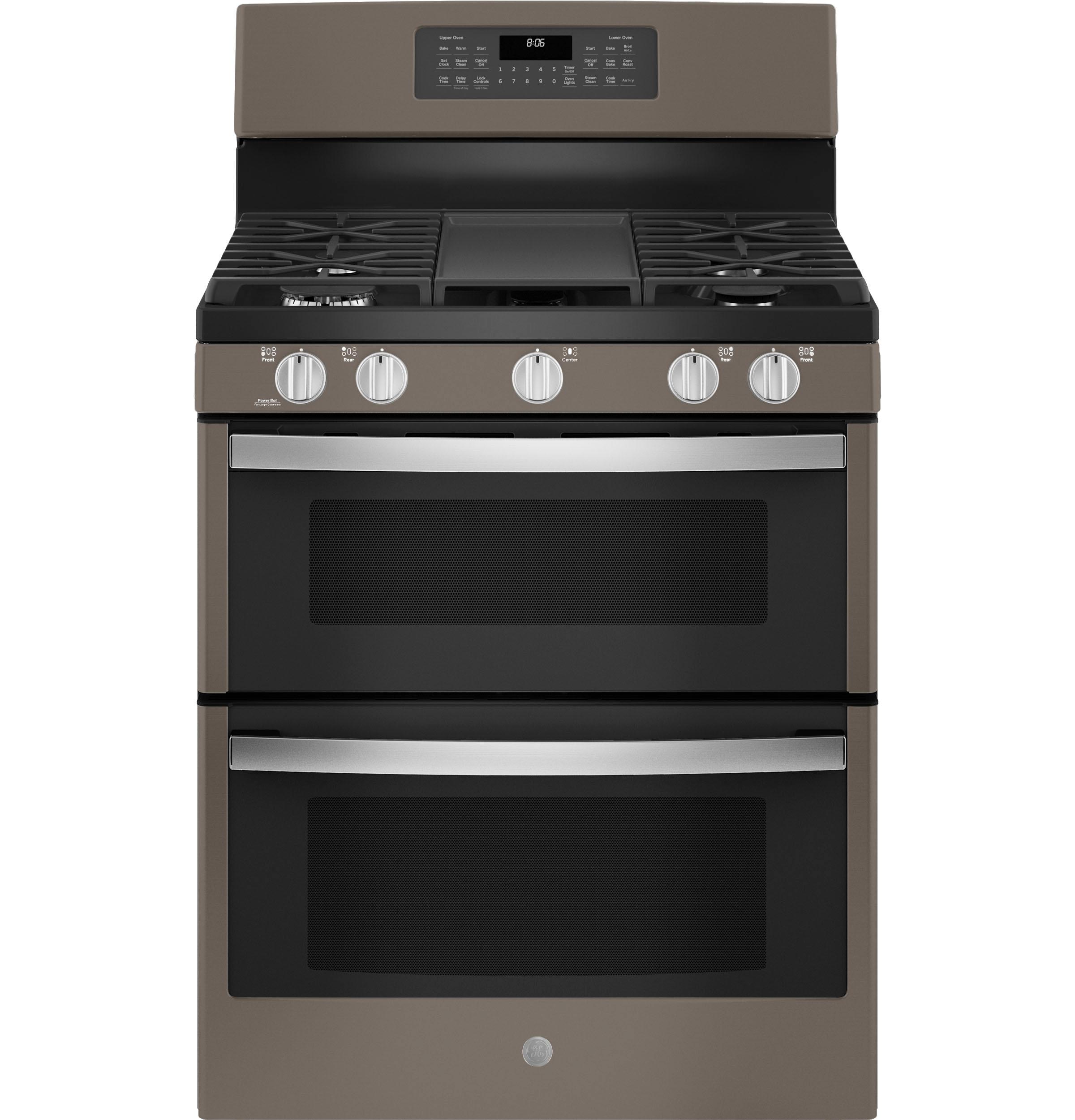
Credit: dshomeappliances.com
Quick Fixes For Burner Problems
Struggling with burner problems on your GE gas range? You’re not alone. Whether it’s a weak flame, no flame at all, or uneven heating, these issues can quickly turn cooking into a frustrating chore. Let’s dive into some quick fixes you can try at home to get your burners working like new again.
Cleaning Clogged Burner Ports
Clogged burner ports are a common culprit for burner troubles. Food debris, grease, and other build-up can block the tiny holes where the gas escapes, leading to uneven flames or none at all. Start by turning off the gas and removing the burner cap.
Use a toothpick, needle, or safety pin to carefully clean out the clogged ports. Don’t force anything in too hard—those holes are delicate. After cleaning, wipe the burner with a damp cloth to remove any leftover residue. Test your burner to see if the flame improves.
Pro tip: Avoid using water directly on the burner ports while cleaning. Excess moisture can lead to rust and damage over time.
Ensuring Proper Gas Flow
If your burner isn’t lighting or the flame is unusually weak, there might be an issue with gas flow. First, check if the gas supply valve is fully open. A partially closed valve can restrict the flow, causing problems.
Next, inspect the hose that connects your gas range to the wall. Look for kinks, bends, or visible damage. If the hose looks fine, consider testing the range on another gas source to rule out supply issues.
Don’t forget to check the regulator attached to your gas line. If it’s faulty, it could be limiting the gas pressure. You might need a professional to replace it.
Inspecting Igniter For Damage
The igniter is what sparks the flame, and if it’s damaged, your burner won’t light. Start by locating the igniter—it’s usually near the burner ports. Look for visible cracks, discoloration, or debris buildup.
If you notice dirt, clean the igniter using a soft toothbrush or cotton swab. Be gentle—you don’t want to damage the component further. If the igniter is cracked or looks worn out, it’s time to replace it.
Ask yourself: Has the igniter ever been replaced? If your range is older, a worn igniter may be the root of your problem. Replacement igniters are affordable and easy to install.
Fixing burner issues doesn’t have to be complicated. With a little patience and attention to detail, you can often solve these problems on your own without calling a technician. Which of these fixes are you planning to try first?
Troubleshooting Oven Heating Issues
If your GE gas range oven isn’t heating properly, it can disrupt your entire cooking routine. Whether your oven isn’t heating at all or is taking too long, identifying the root cause is key. Let’s walk through some common fixes you can try before calling for professional help.
Testing The Bake And Broil Elements
The bake and broil elements are what provide heat inside your oven. If one of these elements is faulty, your oven’s performance will suffer. Start by turning on the bake or broil function and checking if the element glows red or produces heat.
If the element isn’t glowing, it may need replacement. You can visually inspect it for cracks, burns, or other signs of damage. A multimeter is useful here—test the element for continuity to confirm if it’s working or not.
Make sure to turn off the oven and disconnect it from power or gas before testing. Safety first!
Calibrating The Oven Temperature
Sometimes, the issue isn’t with the heating elements but with the temperature calibration. If your food is undercooked or overcooked, your oven may not be heating to the temperature you set. Use an oven thermometer to verify the actual temperature inside the oven.
Place the thermometer in the center of the oven and set it to a specific temperature, like 350°F. After 10-15 minutes, check if the thermometer reading matches your oven setting. If it’s off by 15-20 degrees or more, you may need to adjust the temperature calibration from your oven’s control panel.
Your oven’s user manual will guide you through the calibration process. If you don’t have it, you can usually find it online by searching your model number.
Inspecting The Thermostat Sensor
The thermostat sensor monitors the oven’s internal temperature and tells the control board to adjust heating. If this sensor is faulty or misaligned, your oven may overheat or fail to heat up enough. Look inside your oven to locate the sensor—it’s usually a thin metal rod attached to the back wall.
Make sure the sensor isn’t touching the oven walls, as this can cause inaccurate readings. If it looks damaged, you may need to replace it. You can also test its resistance with a multimeter; the sensor’s resistance should change as the temperature changes.
A faulty thermostat sensor is a common issue that’s often overlooked. Don’t skip this step if you’re trying to solve uneven heating problems.
By tackling these three areas, you’ll likely pinpoint the cause of your oven heating issues. Which one are you planning to check first?
Resolving Control Panel Errors
The control panel on your GE gas range acts as the brain of the appliance. When it displays errors, it can disrupt your cooking plans and leave you frustrated. But don’t worry—resolving control panel errors is often simpler than you think. Let’s dig into some actionable steps you can take to troubleshoot and fix these issues.
Resetting The Control Panel
Sometimes, all your GE gas range needs is a quick reset to clear minor glitches. Begin by unplugging the appliance or turning off the circuit breaker for at least 60 seconds. Once you restore power, check if the error has disappeared.
If the error persists, try pressing and holding the “Clear/Off” button for a few seconds. This resets many models and can often resolve non-critical errors. Still stuck? Refer to your user manual for the specific reset instructions tailored to your model.
Checking For Faulty Wiring
Faulty wiring can cause control panel malfunctions. Turn off the range’s power supply before you inspect the wiring. Safety first—it’s better to double-check than risk a shock.
Open the back panel of the range and examine the wires connecting to the control panel. Look for visible signs like frayed wires, loose connections, or burned spots. If you notice anything unusual, replacing or tightening the wires might do the trick. Not comfortable handling wiring? It’s time to call a professional electrician.
Replacing A Malfunctioning Panel
If resetting and inspecting the wiring don’t solve the problem, your control panel may be defective. Unfortunately, electronic components can wear out over time. A malfunctioning panel often requires a complete replacement.
To replace the panel, first, disconnect the appliance from power. Remove the screws securing the control panel, then carefully unplug any connected wires. Install the new panel by reversing these steps, ensuring all connections are secure before powering it back on.
If this feels overwhelming, consider reaching out to GE’s customer service or hiring a certified technician. While replacing a panel isn’t overly complicated, it’s worth having an expert ensure the job is done right.
What’s your next step? Don’t let a control panel error intimidate you. With patience and attention to detail, you can have your range working perfectly in no time.
Tips For Preventing Future Problems
Dealing with gas range problems can be frustrating, especially when they disrupt your daily cooking routine. But wouldn’t it be better to avoid issues altogether? By taking some simple preventive measures, you can ensure your GE gas range stays in top shape for years to come. Below, you’ll find practical tips that will save you from headaches down the road.
Regular Cleaning And Maintenance
Grease buildup and food debris can cause burners to clog or lead to uneven heating. Set aside time weekly to clean your range thoroughly. Wipe down surfaces with a damp cloth and mild soap after each use to prevent residue from hardening.
Don’t forget to remove and clean the burner grates and caps. Check for any discoloration or damage that might signal wear. A clean range not only works better but also lasts longer.
Have you ever noticed how much easier it is to cook when your appliances are spotless? Keeping your range clean isn’t just about aesthetics—it’s about functionality.
Inspecting Gas Connections Periodically
Loose or damaged gas connections can lead to leaks, which are both dangerous and costly. Make it a habit to inspect the connections every few months. Look for cracks, frayed hoses, or any unusual smell near your range.
If you suspect a gas leak, don’t ignore it. Shut off the gas supply immediately and contact a professional for repairs. It’s better to be safe than sorry.
Would you rather spend five minutes checking connections or hours dealing with repairs? A quick inspection can save you from major trouble.
Using The Range As Intended
Overloading burners with oversized pots or using the wrong cookware can strain your range. Stick to the recommended pot and pan sizes in your user manual. This helps avoid uneven heating and prevents damage to the burners.
Avoid banging pots and pans on the grates, as this can cause wear and tear. Also, resist the urge to use your range for tasks it wasn’t designed for, like heating your kitchen or drying clothes!
Have you ever thought about how small habits can affect your appliances? Treating your range with care ensures it performs well for years.

Credit: www.youtube.com
When To Call A Professional
When your GE gas range isn’t working as it should, it’s natural to want to fix it yourself. After all, a quick online search or a DIY video can make repairs look so simple. But there are times when calling a professional isn’t just the best option—it’s the safest one.
Signs Of Gas Leaks
If you ever smell rotten eggs or sulfur near your gas range, stop everything and act immediately. That’s a clear sign of a gas leak. Don’t try to fix this on your own; turn off the gas supply, ventilate the area, and call a professional technician or your gas company for help.
Sometimes, you might notice a hissing sound near the gas connection. That’s another red flag. Even a small gas leak can cause serious safety risks, so it’s better to be safe than sorry.
Have you checked for unexplained increases in your gas bill? That could also point to a hidden leak. If you suspect this, leave the troubleshooting to the experts to avoid making the issue worse.
Persistent Ignition Failures
If your burners won’t ignite after several tries, you might have a deeper problem. It could be a faulty igniter or a gas flow issue. While replacing an igniter might look simple, improper handling can damage other components or even lead to a gas leak.
Have you noticed the ignition clicking endlessly without lighting the burner? That’s another sign you need professional assistance. A clogged burner or a misaligned igniter might be to blame, but diagnosing it wrong could make things worse.
Repeated ignition failures may also indicate an issue with the gas supply line. A trained technician can pinpoint the problem and fix it safely, saving you time and frustration.
Complex Electrical Issues
Modern GE gas ranges often come with electrical components like control panels, timers, and sensors. If these stop working or display error codes, it’s not a quick DIY fix. Electrical issues often require specialized tools and knowledge to resolve safely.
Is your oven not heating evenly or refusing to stay at the set temperature? The problem might involve a malfunctioning thermostat or a faulty circuit board. Attempting to repair or replace these parts without the right expertise can lead to costly mistakes.
Electrical malfunctions can also create safety hazards, such as short circuits or even fires. If you’re not sure how to proceed, it’s smarter to let a professional handle it.
So, the next time your GE gas range acts up, ask yourself: Is this something I can confidently fix, or should I call an expert? Knowing when to step back can save you time, money, and unnecessary stress.

Credit: alphatekappliance.com
Conclusion
Troubleshooting your GE gas range can feel overwhelming, but it’s manageable. Start with basic checks like gas supply or burner cleanliness. Most issues can be fixed without professional help. Regular maintenance prevents many common problems. Always consult your user manual for guidance.
If problems persist, contact a certified technician for support. Keeping your range in good condition ensures safe and efficient cooking. Stay proactive, and small issues won’t become big headaches. With these tips, your GE gas range will serve you well for years.

